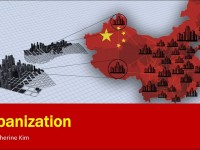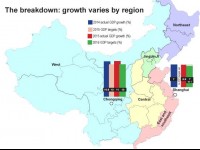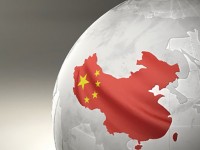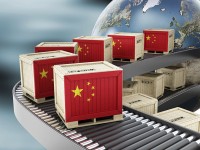Tom Watkins, President and CEO of the Economic Council of Palm Beach County, FL
Oct 05, 2016
While Chinese challenges abound, no one should denigrate the remarkable progress the country has made in recent history. Failure will not be an option for China. The world needs China’s leaders to work at rebalancing their own economy. This will require building better social safety nets and managing the Chinese people’s expectations, hopes and “Chinese Dreams.”

Matthew Hartzell, Geographer and Urbanist
Sep 07, 2016
Addressing the systemic imbalances in China's urban system will be a difficult and long-term endeavor. However, as service industries and technology expand their role within the Chinese economy, there's no reason why firms and jobs can't be more evenly spread out across the national network of cities, as they are in the U.S.
Yu Yongding, Former President, China Society of World Economics
Jun 06, 2016
China’s economic growth has been slowing for six years – far longer than expected. Eager to stem the slide, Chinese government officials and economists have desperately sought a clear explanation pointing toward an effective policy response.

Nick Marro, Business advisory services manager with the US-China Business Council
Chenjun Ye, Business advisory services research assistant with US-China Business Council
Jun 06, 2016
In 2015, China’s growth was again at the center of international headlines, but the focus was instead on the slowdown of the world’s second-largest economy. Much has been made of China’s adjustment to the “new normal,” even as US-China Business Council (USCBC) companies reported that China remains a priority market that delivers more growth than most other markets around the globe. But China is not a monolith, and local-level growth patterns suggest the emergence of the new model.

He Weiwen, Senior Fellow, Center for China and Globalization, CCG
Mar 16, 2016
The years ahead offer parallel tracks for growth for both countries, and an “early harvest” for US enterprises, if opportunities are seized in areas such as innovation, Internet plus, reducing capacity, expanding the service sector – especially in healthcare -- and developing emerging industries.

Vasilis Trigkas, Visiting Assistant Professor, Schwarzman College, Tsinghua University
Mar 07, 2016
China’s stock market turmoil has caused pundits to conclude that China’s economy won’t face a soft landing. Yet the macroeconomic fundamentals of the Chinese economy continue to be auspicious.
Feb 29, 2016
China’s transition to a more innovative, consumer-driven economy is well underway. While volatility is likely to persist, smart use of state resources, together with sure-footed reforms and increased transparency in decision-making should help China achieve moderate yet sustainable long-term growth.

Ben Reynolds, Writer and Foreign Policy Analyst in New York
Feb 22, 2016
China now seeks to export its excess industrial capacity as a means to cope with its economic troubles. The problem is that China is trying to export its way out a local crisis caused in large part by a global glut of commodities. Whatever the case, we should expect Chinese foreign investment to continue to grow, spurring a commensurate rise in its political influence.
Liu Youfa, Senior Fellow, Shanghai Institutes for International Studies
Feb 04, 2016
Despite the slowdown, there is plenty of room for sustainable growth in the country, and the leadership’s newly announced plan promises to stabilize and expand China’s potential based on a solid foundation that’s often overlooked.

Justin Yifu Lin, Former Chief Economist, The World Bank
Feb 03, 2016
There are many good investment opportunities during the present economic slowdown, and that is the major difference between China and the developed countries. Even if external conditions do not improve and export growth is weak, China's economy may still grow at 6.5 percent by relying on domestic investment and consumption growth, thus contributing around 30 percent of global growth annually.